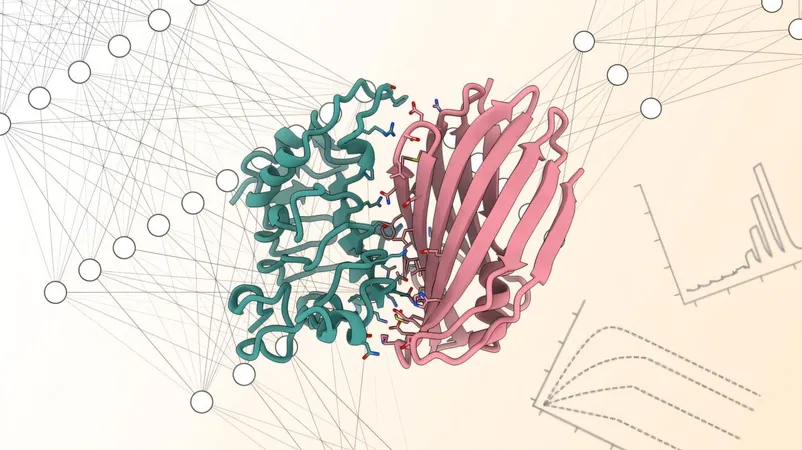
Revolutionizing Protein Design: The Game-Changing Open-Source Platform BindCraft
2025-08-29
Author: Emily
A New Era in Protein Design
Since its groundbreaking debut in 2024, BindCraft, an open-source platform developed at EPFL, is shaking up the realm of protein design. This innovative tool empowers scientists by simplifying the complex and critical task of controlling protein interactions, vital for processes like cell signaling, growth, and immune responses.
Breaking Down Barriers in Science
Traditionally, discovering new binders—proteins engineered to latch onto important therapeutic targets—has been an expensive, arduous endeavor, often requiring extensive computational skills and resources that many labs can't access. As Lennart Nickel, a Ph.D. student at EPFL, puts it, "Conventional methods demand screening through tens of thousands of protein candidates, making it a daunting task for under-resourced laboratories." With BindCraft, however, the aim was to make this process user-friendly and less resource-intensive.
Innovative Techniques at Work
Unlike traditional approaches that depend on feeding amino acid sequences into neural networks for screening, the team behind BindCraft took a novel direction. Collaborating with MIT, they utilized the advanced Google DeepMind's AlphaFold2 system to generate sequences for new binders based on specific desired functions.
Efficiency Meets Accessibility
This reverse-engineering approach enhances the efficiency of protein design by concentrating on a handful of binder designs rather than sifting through massive libraries. BindCraft not only streamlines this intricate process but also democratizes it, making it accessible to a broader audience of scientists.
Impressive Results and Real-World Applications
Recent publications in *Nature* validate BindCraft’s potential, showcasing binders crafted to interact with various biotechnological and therapeutic molecules. These include adeno-associated viruses (AAVs) used for therapeutic gene delivery, CRISPR-Cas9 for gene editing, and numerous common allergens. Remarkably, these binders achieved an average attachment success rate of 46%.
Targeted Therapies for a Safer Future
The implications are profound. With AAVs, these binders can facilitate targeted gene delivery while significantly minimizing side effects. For CRISPR-Cas9, they can inhibit gene editing actions, ensuring precise control over where and when these edits occur.
A Rapid Adoption in the Scientific Community
Since its initial release, BindCraft has rapidly gained traction, with enthusiastic feedback from the biological community fueling its further development. Pacesa notes, "The swift adoption of our tool, even in industrial settings, is astonishing. User requests for additional features inspire us to continually refine our platform." They are already exploring adaptations to target smaller therapeutic molecules like peptides.
The Future is Bright for BindCraft
With its innovative approach and rapid acceptance, BindCraft is not just a tool; it's a pathway to revolutionizing how scientists interact with protein design, making groundbreaking research more achievable for labs worldwide.









 Brasil (PT)
Brasil (PT)
 Canada (EN)
Canada (EN)
 Chile (ES)
Chile (ES)
 Česko (CS)
Česko (CS)
 대한민국 (KO)
대한민국 (KO)
 España (ES)
España (ES)
 France (FR)
France (FR)
 Hong Kong (EN)
Hong Kong (EN)
 Italia (IT)
Italia (IT)
 日本 (JA)
日本 (JA)
 Magyarország (HU)
Magyarország (HU)
 Norge (NO)
Norge (NO)
 Polska (PL)
Polska (PL)
 Schweiz (DE)
Schweiz (DE)
 Singapore (EN)
Singapore (EN)
 Sverige (SV)
Sverige (SV)
 Suomi (FI)
Suomi (FI)
 Türkiye (TR)
Türkiye (TR)
 الإمارات العربية المتحدة (AR)
الإمارات العربية المتحدة (AR)